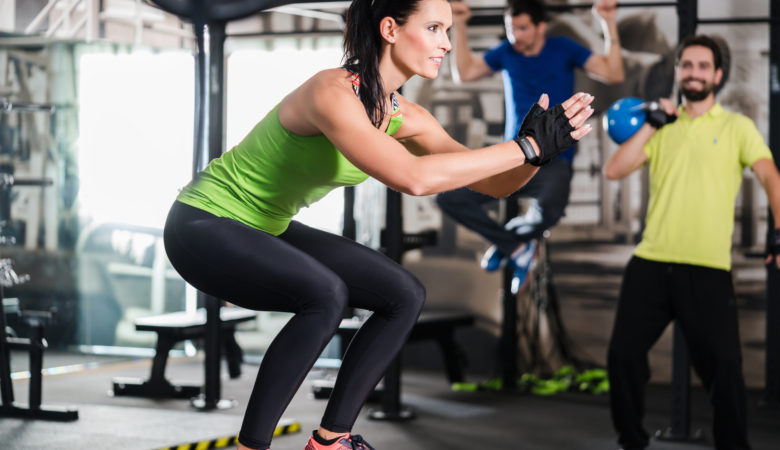Your Workout Routine Needs Roots in Functional Fitness

Our workout routines don’t always benefit our everyday movements. After all, how often do you use your kickboxing or Brazilian jujitsu skills in your daily life? You might be able to lift hundreds of pounds of weight with balanced gym equipment, then strain a muscle when carrying the groceries inside. When working out, it’s worth considering functional fitness instead.
Functional fitness helps train our bodies for real-life, everyday movements like hefting a suitcase into the overhead bin, or reaching for an item on the top shelf. Functional fitness routines train your muscles to work together as a group, to better prepare your body for the physical stress of everyday life.
Adding a functional fitness component to your workout routine can make a big difference in your overall health and daily comfort. Here’s what you need to know about this practical workout technique.
Introducing functional fitness
Functional fitness incorporates a number of different goals. They’re all basic: you’re not trying to deadlift several hundred pounds. Instead, these workouts focus on the fundamentals of daily movement. Strength, balance and coordination, range of motion, mobility and power are the key to a practical workout routine.
When you incorporate functional fitness into your daily life, you’ll have an easier time walking, running, jumping, reaching, bending, pushing, pulling and more. We use these movements on a regular basis, often without realizing it. If it’s getting harder to bend over and tie your shoes, or you experience new pain after chasing your kids around the playground, functional fitness can help.
Functional fitness has been around for millennia. Modern functional fitness has roots in physical and occupational therapy. When people recover from major injuries and illnesses, they often have to train their bodies to handle everyday movements. However, these exercises can benefit healthy, physically fit people, too.
Is your fitness regimen geared toward mobility?
Anyone can incorporate functional fitness exercises into their routine. Depending on your fitness level, it’s best to start slow. Use your body weight for resistance at first. Later, as your strength, coordination and power improve, you can add weights and other fitness equipment.
Functional fitness can help by:
- Increased mobility: When you add functional fitness training to your workouts, you’ll improve your range of motion, mobility, flexibility, strength and coordination. This improves overall mobility.
- Reduced risk of injury: If you’ve ever pulled a muscle just getting out of bed, you know how easy it is to injure yourself during everyday activities. Functional fitness reduces the risk of surprise injuries to muscles and ligaments.
- Better muscle memory: As you work on functional fitness exercises, your brain and muscle memory will improve. When you train, you’re teaching your body to “remember” how to perform certain movements.
- Greater balance and improved posture: Instead of targeting specific areas, functional fitness helps muscles work together. That improves your overall strength and balance. As your muscles acclimate to the training, you’ll reduce stress on your body and improve your posture.
- Easier everyday movements: Functional fitness improves your body’s overall condition and trains common muscle groups to work together. Because you’re targeting everyday movements, you’ll notice greater physical ease each day.
How to incorporate smarter exercises into your routine
According to WebMD, common functional fitness exercises include:
- Bodyweight squats
- Jump squats
- Jumping jacks
- Jumping, lunging, or stepping onto an elevated surface
- Lateral bounds
- Movements done while balancing on one leg
- Push-ups
- Walking lunges
These are great exercises to try when you’re first starting out. Notice that they all rely on bodyweight for resistance, rather than special equipment. They also work more than one muscle group, training them to work together for best results.
WebMD recommends combining functional fitness exercises with other routines for best results. Don’t forget your form, either—even though functional fitness is designed to reduce the risk of injury in everyday life, you can still be injured during training. Start slow and focus on your form. As you gain strength and agility, you can increase your workout intensity.
Whatever your current workout routine, adding a functional fitness component can dramatically improve your overall fitness. Everyday tasks will be easier, and you’ll be less likely to experience fatigue and injury.
If you’re just starting a fitness journey, consider visiting a trainer. They can help design a workout routine that’s right for you, and teach you proper form. Similarly, if you’re recovering from physical injury, ask your physical therapist or doctor about safe exercise routines.
Functional fitness is a great—and fun—way to improve strength and mobility. Add these exercises into your routine, and get ready to love the way you feel.

